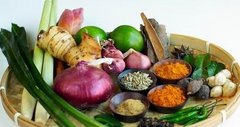Fuwa Fuwa mean fluffy fluffy in Japanese. These fluffy Japanese Soufflé pancakes are like eating cottony clouds, but even better with homemade whipped cream and fresh berries!
Hugh in Japan, soufflé pancakes are trending on social media- and they are great alternative recipe for Pancake Day. Or any day of the year!
Japanese fluffy pancakes are deceptively simple. The fluffy soufflé effect is achieved by combining egg white meringue with classic pancake batter. You can either pipe them freely into a pan, to rise on their own. Or use a ring, to help guide them vertically as they cook and rise. If you are using a ring, it is vital to grease them well so you can easily release them once cooked.
Ingredients:
For the pancake batter:
- 2 large eggs
- 2 tbsp milk
- ½ tsp vanilla extract
- 35g plain flour/cake flour
- 30g granulated sugar
- ½ tsp baking powder
- 1 tbsp neutral-flavoured oil (vegetable, sunflower, canola) for greasing
- some water, for steaming
For fresh whipping cream (optional)
- ½ cup double cream
- 2 tbsp icing sugar, sifted
For the topping:
- 1 tbsp icing sugar
- fresh berries
- maple syrup/ chocolate sauce
Method:
For the whipping cream: If you like to serve the fluffy pancake with fresh whipped cream (optional), make it before making the fluffy pancake. In a clean chilled bowl, add in the double cream and sugar. Whisk on high speed until medium to firm peaks form. The cream should not be runny but soft, fluffy and firm instead. Keep the whipping cream chilled until you are ready to serve the pancakes.
For the pancake batter: Separate the egg whites and egg yolks into two different bowls. In the egg yolks bowl, add the milk and vanilla and whisk using a hand whisk until thick and frothy.
Sift the cake flour and baking powder into the bowl.
Whisk to combine thoroughly; do not overmix. Set aside while you make the meringue.
In the egg whites bowl, using hand mixer, whisk the egg whites until frothy and opaque. Gradually add in the sugar, one-third of it at a time. Then increase the mixer speed to high and beat vigorously until still peaks form. It takes about 2-3 minutes of beating at high speed to reach stiff peaks.
To check for stiff peaks, stop whisking and pull up your beaters or whisk. The meringue in the bowl or on the whisk should be firm enough to hold peak, pointing straight up. By this time, the meringue should have a glossy texture too.
Heat a non-stick frying pan over a lowest heat. Brush with cooking oil and lightly remove any visible oil with kitchen paper. This is to prevent spotty pattern on the pancakes. Keep the pan on low heat while you combine the egg whites and egg yolk mixture in the next step.
To fold in the meringue: Take one-third of the egg whites and add to the egg yolk mixture. Whisk together by hand (don't worry too much about breaking air bubbles at this point).
Next, take half of the remaining meringue and add to the egg yolk mixture. using a hand whisk, gently fold them in without breaking the air bubbles in the egg whites.
Now all the remaining meringue into the egg yolk mixture. Very gently, fold the two mixtures together, taking care not to deflate the air bubbles in the meringue and batter as you fold. Mix the batter very gently until well combined and homogenous.
To cook the pancake: Keep the frying pan at all times over low heat. Each pancake gets roughly four small scopes of batter, and you will be making 3 pancakes. For the first pancake, place one scoop of batter and make a tall mound in the frying pan, using an ice cream scoop or a small ladle or a serving spoon. Next, stack one more scoop of batter onto the first scoop already in the pan. Repeat for the next two pancakes, giving each pancakes two scoops of batter.
By the time all three pancakes have two scoops, the surface of the batter is slightly dry already. At this point, you can mould one more scoop on top of each pancake, keeping the batter piled up high. In the bowl, you should have roughly 3 scoops left ( no worry if you have more).
Set the timer for 6-7 minutes, add 1 tbsp water in the 3 empty spaces inside the pan, and cover with a lid. The steam from the water keeps the pancakes moist while they cook. Cooking time is just a guideline; how long you cook the pancakes is based on the temperature of your frying pan.
After 2 minutes, lift the lid, add one final scoop for each pancake. Make sure to stack the batter high, not wide. If the water has evaporated, add a little bit more. Cover with the lid and cook.
After 6-7 minutes, lift the pancake VERY GENTLY using an offset spatula. If the pancake is stuck, don't touch it until it firms up a little. If you force it, the pancake will crack in the middle. When the pancakes is ready, you can easily move the pancake.
Add more water to the empty spaces in the pan and cover. Set the timer for 4-5 minutes to cook the other side on the lowest heat setting. Once they are nicely browned, transfer the pancakes to your serving plates.
To serve: Place the optional fresh whipped cream on the pancakes (or leave it at the side of the pancake) and top with the berries. Dust the pancake with icing sugar and drizzle with maple syrup or chocolate sauce.
Enjoy!!























